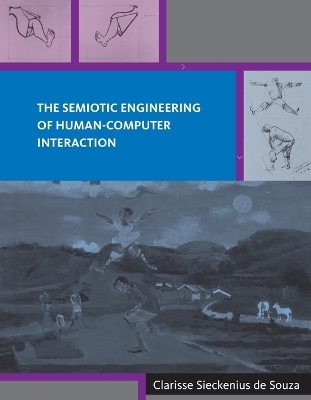
The Semiotic Engineering of Human-Computer Interaction
Seiten
2005
MIT Press (Verlag)
978-0-262-52709-5 (ISBN)
MIT Press (Verlag)
978-0-262-52709-5 (ISBN)
- Lieferbar
- Versandkostenfrei
- Auch auf Rechnung
- Artikel merken
A theory of HCI that uses concepts from semiotics and computer science to focus on the communication between designers and users during interaction.
In The Semiotic Engineering of Human-Computer Interaction, Clarisse Sieckenius de Souza proposes an account of HCI that draws on concepts from semiotics and computer science to investigate the relationship between user and designer. Semiotics is the study of signs, and the essence of semiotic engineering is the communication between designers and users at interaction time; designers must somehow be present in the interface to tell users how to use the signs that make up a system or program. This approach, which builds on-but goes further than-the currently dominant user-centered approach, allows designers to communicate their overall vision and therefore helps users understand designs-rather than simply which icon to click.
According to de Souza's account, both designers and users are interlocutors in an overall communication process that takes place through an interface of words, graphics, and behavior. Designers must tell users what they mean by the artifact they have created, and users must understand and respond to what they are being told. By coupling semiotic theory and engineering, de Souza's approach to HCI design encompasses the principles, the materials, the processes, and the possibilities for producing meaningful interactive computer system discourse and achieves a broader perspective than cognitive, ethnographic, or ergonomic approaches.
De Souza begins with a theoretical overview and detailed exposition of the semiotic engineering account of HCI. She then shows how this approach can be applied specifically to HCI evaluation and design of online help systems, customization and end-user programming, and multiuser applications. Finally, she reflects on the potential and opportunities for research in semiotic engineering.
In The Semiotic Engineering of Human-Computer Interaction, Clarisse Sieckenius de Souza proposes an account of HCI that draws on concepts from semiotics and computer science to investigate the relationship between user and designer. Semiotics is the study of signs, and the essence of semiotic engineering is the communication between designers and users at interaction time; designers must somehow be present in the interface to tell users how to use the signs that make up a system or program. This approach, which builds on-but goes further than-the currently dominant user-centered approach, allows designers to communicate their overall vision and therefore helps users understand designs-rather than simply which icon to click.
According to de Souza's account, both designers and users are interlocutors in an overall communication process that takes place through an interface of words, graphics, and behavior. Designers must tell users what they mean by the artifact they have created, and users must understand and respond to what they are being told. By coupling semiotic theory and engineering, de Souza's approach to HCI design encompasses the principles, the materials, the processes, and the possibilities for producing meaningful interactive computer system discourse and achieves a broader perspective than cognitive, ethnographic, or ergonomic approaches.
De Souza begins with a theoretical overview and detailed exposition of the semiotic engineering account of HCI. She then shows how this approach can be applied specifically to HCI evaluation and design of online help systems, customization and end-user programming, and multiuser applications. Finally, she reflects on the potential and opportunities for research in semiotic engineering.
Clarisse Sieckenius de Souza is Associate Professor and Founder of the Semiotic Research Group, Department of Computer Science, at Pontificia Universidad Catolica do Rio de Janeiro, Brazil.
| Reihe/Serie | Acting with Technology |
|---|---|
| Mitarbeit |
Herausgeber (Serie): Bonnie A. Nardi, Victor Kaptelinin, Kirsten A. Foot |
| Zusatzinfo | 61 illus.; 61 Illustrations |
| Verlagsort | Cambridge, Mass. |
| Sprache | englisch |
| Maße | 178 x 229 mm |
| Themenwelt | Informatik ► Software Entwicklung ► User Interfaces (HCI) |
| ISBN-10 | 0-262-52709-X / 026252709X |
| ISBN-13 | 978-0-262-52709-5 / 9780262527095 |
| Zustand | Neuware |
| Haben Sie eine Frage zum Produkt? |
Mehr entdecken
aus dem Bereich
aus dem Bereich
Aus- und Weiterbildung nach iSAQB-Standard zum Certified Professional …
Buch | Hardcover (2023)
dpunkt Verlag
CHF 48,85
Lean UX und Design Thinking: Teambasierte Entwicklung …
Buch | Hardcover (2022)
dpunkt (Verlag)
CHF 48,85
Wissensverarbeitung - Neuronale Netze
Buch | Hardcover (2023)
Carl Hanser (Verlag)
CHF 48,95


